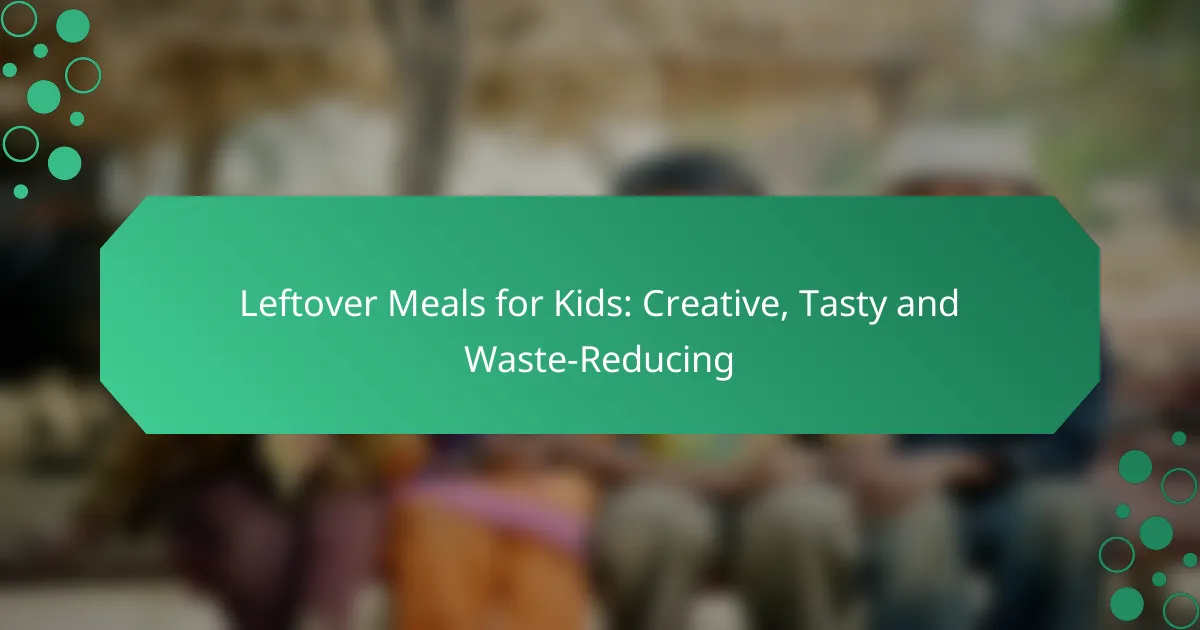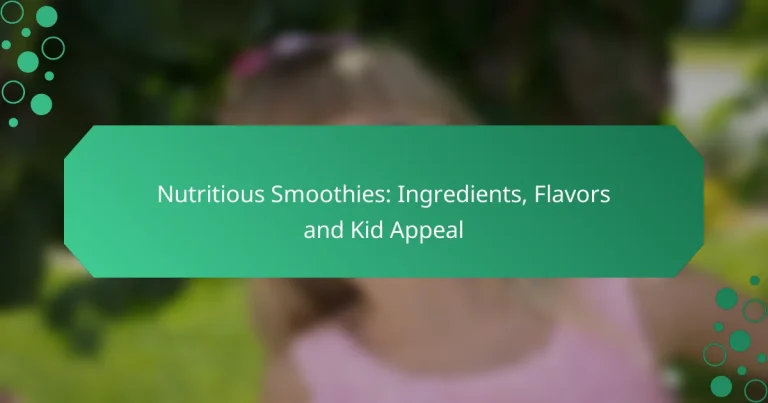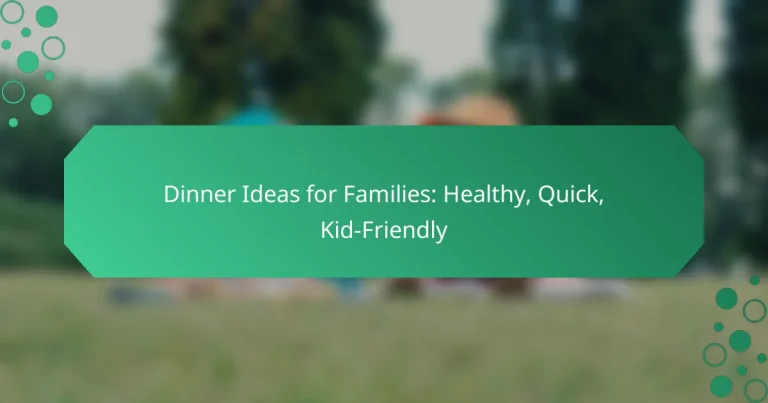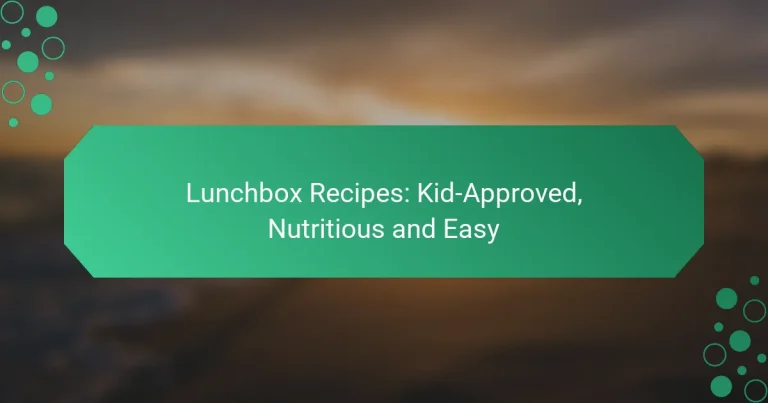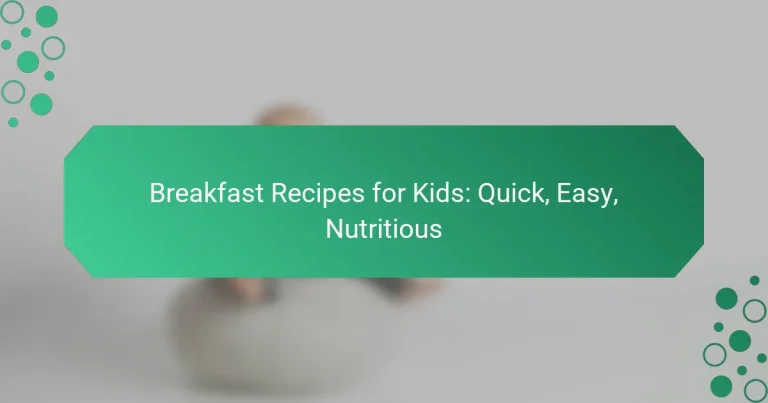Leftover Meals for Kids: Creative, Tasty and Waste-Reducing
Transforming leftover meals into kid-friendly dishes can make mealtime both fun and nutritious while significantly reducing food waste. By using creativity and engaging recipes, parents can turn uneaten food into exciting meals that children will love, all while being practical and economical. Embracing leftovers not only saves money but also helps minimize the environmental impact of food disposal.
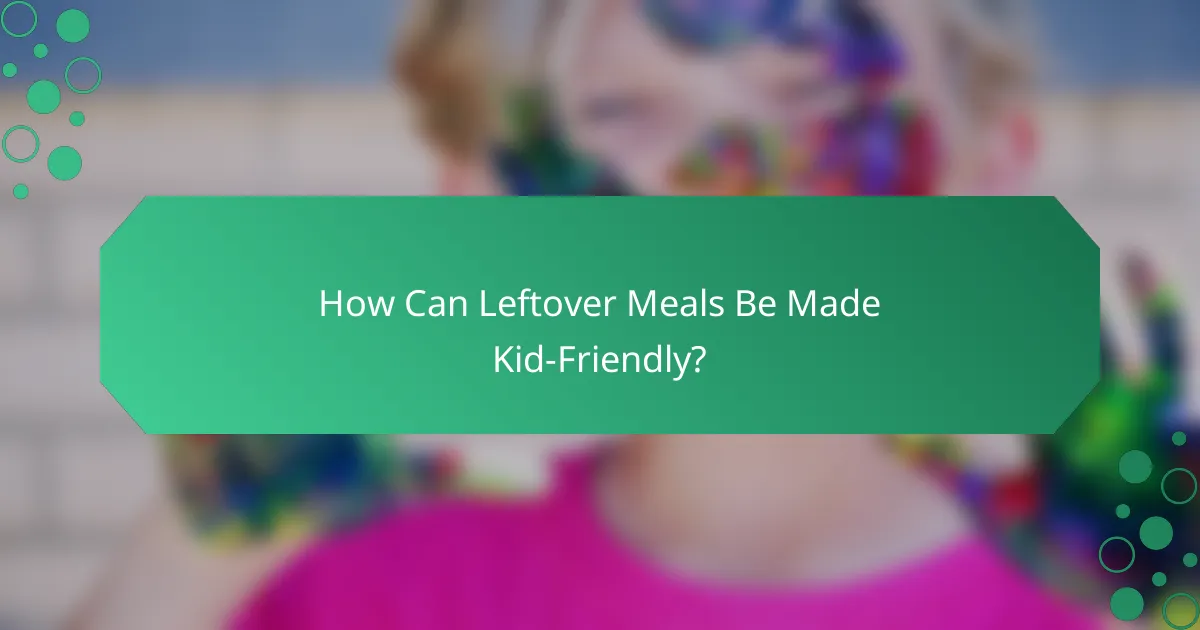
How Can Leftover Meals Be Made Kid-Friendly?
Making leftover meals kid-friendly involves transforming them into appealing, fun, and interactive dishes that children will enjoy. By incorporating creativity and engagement, parents can reduce food waste while ensuring their kids eat nutritious meals.
Incorporating fun shapes
Using cookie cutters to create fun shapes from leftover foods can make meals more exciting for kids. For example, sandwiches, fruits, and vegetables can be cut into stars, hearts, or animals, turning an ordinary meal into a playful experience. This simple technique can encourage children to try new foods they might otherwise avoid.
Using colorful ingredients
Incorporating a variety of colorful ingredients can make leftover meals visually appealing. Bright vegetables like bell peppers, carrots, and spinach not only enhance the meal’s appearance but also provide essential nutrients. Aim for a rainbow of colors on the plate to entice kids and make the meal more enjoyable.
Creating interactive meals
Interactive meals allow kids to engage with their food, making mealtime more fun. For instance, create a “build-your-own” taco night using leftover meats, beans, and toppings. This approach gives children the freedom to choose what they want, fostering independence and creativity in their eating habits.
Involving kids in preparation
Getting kids involved in meal preparation can increase their interest in eating leftovers. Simple tasks like washing vegetables, mixing ingredients, or assembling dishes can make them feel like they are part of the cooking process. This involvement often leads to a greater willingness to try what they’ve helped create.
Offering dipping sauces
Dipping sauces can make leftover meals more appealing to children. Providing a variety of sauces, such as hummus, yogurt-based dips, or salsa, can encourage kids to experiment with different flavors. Pairing leftover veggies or proteins with a tasty dip can transform a simple meal into a fun and flavorful experience.
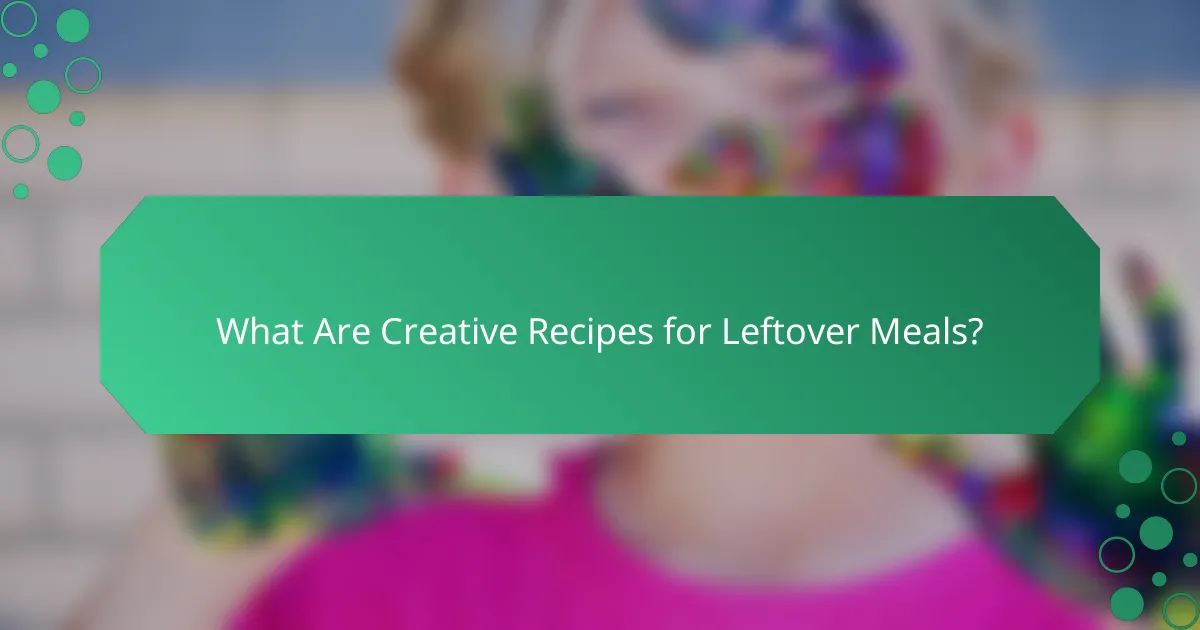
What Are Creative Recipes for Leftover Meals?
Creative recipes for leftover meals transform uneaten food into delicious dishes, minimizing waste while keeping mealtime exciting for kids. These recipes utilize various ingredients that might otherwise go to waste, making them both practical and economical.
Leftover vegetable quesadillas
Leftover vegetable quesadillas are a fun and easy way to use up any extra veggies in your fridge. Simply chop the vegetables into small pieces, mix them with cheese, and place them between two tortillas. Cook on a skillet until golden brown and the cheese is melted.
Consider using vegetables like bell peppers, spinach, or zucchini. You can also add spices or beans for extra flavor and nutrition. Serve with salsa or guacamole for a tasty dip.
Pasta bake with mixed leftovers
A pasta bake is an excellent way to combine various leftovers into a hearty meal. Start by cooking pasta and mixing it with leftover meats, vegetables, and a sauce of your choice. Top with cheese and bake until bubbly.
This dish allows for flexibility; you can use any type of pasta and sauce, whether it’s marinara, alfredo, or pesto. Aim for a balance of protein and veggies to make it nutritious and satisfying.
Fried rice with various proteins
Fried rice is a versatile dish that can incorporate a variety of leftover proteins and vegetables. Begin by sautéing onions and garlic, then add cooked rice along with any leftover meats like chicken, beef, or tofu. Toss in vegetables such as peas, carrots, or corn.
Season with soy sauce or teriyaki sauce for flavor. This dish is quick to prepare and can be customized based on what you have on hand, making it a great option for using up leftovers.
Wraps with leftover meats
Wraps are a convenient way to enjoy leftover meats while adding fresh ingredients. Use tortillas or flatbreads and fill them with sliced leftover meats, lettuce, tomatoes, and any sauces you prefer. Roll them up tightly for an easy-to-eat meal.
Consider adding cheese or hummus for extra flavor and creaminess. This option is not only quick to prepare but also allows kids to customize their wraps with their favorite ingredients.
Soup with leftover grains and veggies
Soup is a comforting way to use up leftover grains and vegetables. Start by sautéing onions and garlic, then add broth and any leftover grains like rice or quinoa along with chopped vegetables. Simmer until everything is heated through.
This dish is highly adaptable; you can use any type of broth and mix in herbs or spices for added flavor. It’s a great way to create a nutritious meal while reducing food waste.
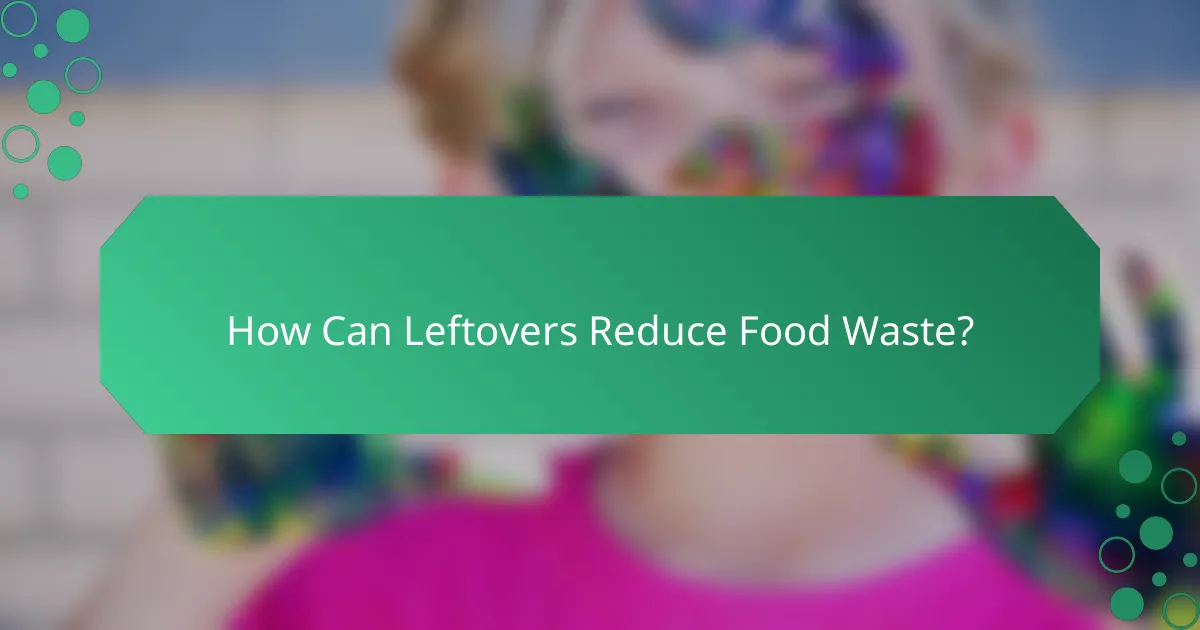
How Can Leftovers Reduce Food Waste?
Leftovers play a crucial role in reducing food waste by allowing families to repurpose uneaten meals instead of discarding them. By creatively using leftovers, you can save money and minimize the environmental impact associated with food disposal.
Understanding portion control
Portion control is essential for minimizing leftovers and food waste. By serving appropriate amounts, you can ensure that meals are satisfying without excess. A good rule of thumb is to start with smaller portions and allow for seconds if needed, which can help gauge appetite accurately.
Involving children in portion decisions can also teach them about waste and encourage them to eat what they take. This practice not only reduces leftovers but fosters a sense of responsibility regarding food consumption.
Utilizing food storage techniques
Proper food storage techniques can significantly extend the life of leftovers and reduce waste. Use airtight containers to keep food fresh and label them with dates to track freshness. Most cooked meals can last in the refrigerator for about three to four days, while freezing can extend this to several months.
Consider using vacuum-sealed bags for items you plan to freeze, as this method can prevent freezer burn and maintain quality. Organizing your fridge and freezer can also help you use leftovers before they spoil.
Planning meals ahead
Meal planning is a proactive approach that can help minimize leftovers and food waste. By planning meals for the week, you can ensure that ingredients are used efficiently, reducing the likelihood of excess. Aim to create recipes that can be easily adapted or combined with other meals.
For example, if you roast a chicken, plan to use the leftovers in sandwiches, salads, or soups throughout the week. This strategy not only reduces waste but also saves time and money on grocery shopping.

What Are the Nutritional Benefits of Leftover Meals?
Leftover meals can provide significant nutritional benefits for kids by retaining essential nutrients and promoting balanced eating habits. By creatively repurposing leftovers, parents can ensure their children receive a variety of nutrients while minimizing food waste.
Retaining nutrients in cooked foods
Cooking can cause some nutrient loss, but leftover meals often retain a substantial amount of vitamins and minerals. For example, reheating vegetables can still provide important nutrients like vitamin C and fiber, especially if they are stored properly in airtight containers. Aim to consume leftovers within a few days to maximize their nutritional value.
To preserve nutrients, consider reheating leftovers gently, using methods like steaming or microwaving, which can help maintain their quality. Avoid boiling, as this can lead to further nutrient loss.
Encouraging balanced meals
Leftover meals can easily be transformed into balanced dishes that include proteins, carbohydrates, and vegetables. For instance, leftover grilled chicken can be added to a salad or mixed into a stir-fry with rice and assorted veggies. This approach encourages kids to eat a variety of food groups in one meal.
When planning meals, aim to include at least one protein source, a carbohydrate, and a serving of vegetables. This not only enhances nutrition but also helps develop healthy eating habits in children.
Reducing reliance on processed foods
Utilizing leftovers can significantly reduce the need for processed foods, which often contain high levels of sodium, sugars, and unhealthy fats. By preparing meals at home and using leftovers creatively, families can create healthier options that are both tasty and nutritious.
Encourage kids to participate in meal prep with leftovers, such as making wraps or quesadillas, which can be fun and engaging. This involvement can foster a greater appreciation for home-cooked meals and reduce the temptation to reach for convenience foods.
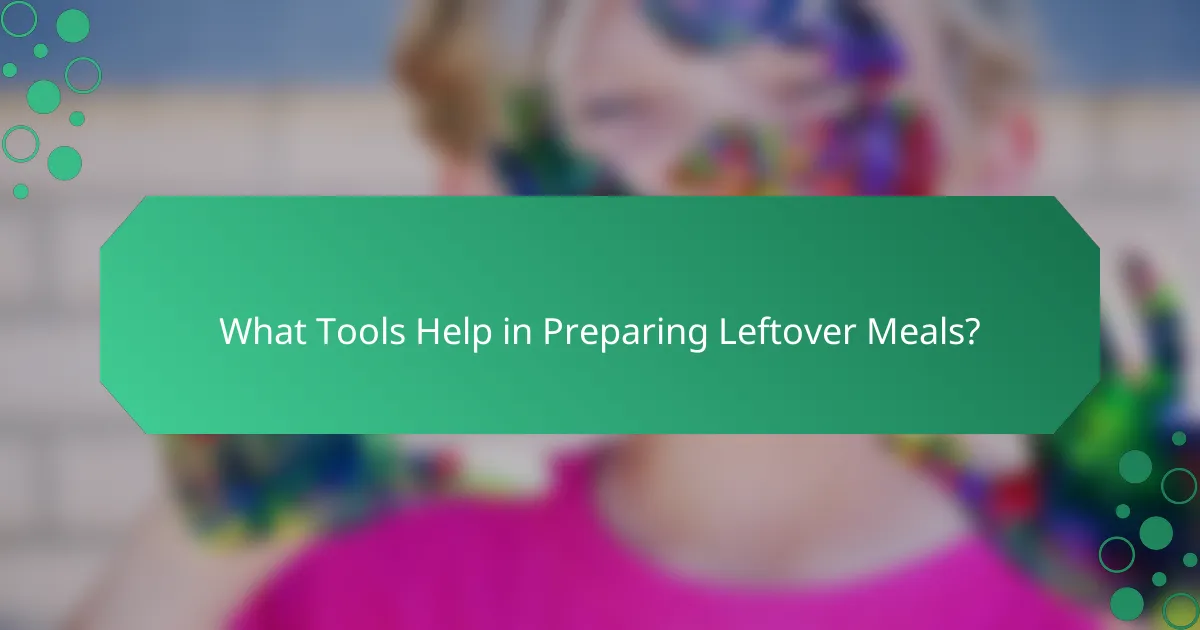
What Tools Help in Preparing Leftover Meals?
Utilizing the right tools can significantly enhance the efficiency and creativity of preparing leftover meals for kids. Key tools include meal prep containers and food processors, which streamline the process and help reduce food waste.
Meal prep containers
Meal prep containers are essential for storing and organizing leftover meals. They come in various sizes and materials, such as glass or BPA-free plastic, allowing for easy reheating and portion control. Look for containers that are microwave and dishwasher safe for convenience.
When choosing meal prep containers, consider options with compartments to separate different food items. This can help maintain the freshness and flavor of each component, making meals more appealing to kids. Labeling containers with dates can also help track freshness and minimize waste.
Food processors for quick meals
Food processors can be a game-changer when it comes to quickly transforming leftovers into new meals. They can chop, blend, or puree ingredients, making it easy to create sauces, soups, or smoothies from leftover vegetables and proteins. This versatility encourages kids to enjoy a variety of flavors and textures.
When using a food processor, start with small batches to avoid overloading the machine and ensure even processing. Experiment with different combinations of leftovers to create unique dishes, such as veggie patties or pasta sauces. Always supervise kids when using kitchen appliances to ensure safety.
